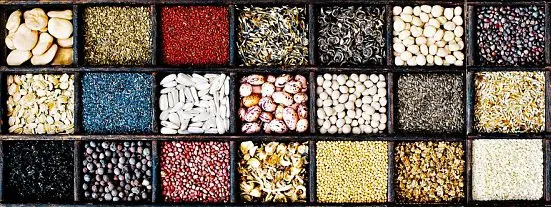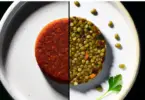By Gaye Levy
Contributing Writer for Wake Up World
Whether or not you currently have a food garden, practical wisdom says you should stash away some heirloom seeds for the long term. If the time ever came when food was in short supply or overly expensive, your stored seeds could become a lifeline. Stored seeds could be used in your own garden, in a community garden or even as tender in a barter situation.
This raises the question: what is the best way to store seeds for the long term? This question is especially timely for me since I have a number of new, unused seed packets that need to be packed away somewhere besides my desk drawer. So today I have gathered a few options for you.
Storing Seeds for the Long Term
[pro_ad_display_adzone id=”110028″]
During my own research, I learned that storing seeds is not unlike storing food. The enemies of seeds are similar: heat, light and humidity. Some sources also indicate that oxygen is a problem with seed storage.
Here are some tips for storing your seeds:
1. Keep seeds at a cool to cold temperature of 40 degrees fahrenheit or less.
2. Avoid fluctuations in temperature such as a garage or storeroom that is cold in winter but blazing hot in summer.
3. Avoid light and never store seeds in direct sunlight or a well lit room.
4. Keep your seeds in a moisture proof containers. A Mylar bag or mason jar is perfect as is a food saver bag. Even a standard ziploc bag will work if you take care to squeeze out all of the air first.
5. Storing your seeds with a desiccant (silica gel) or oxygen absorber may prolong their life.
6. As with your food stores, rotate seeds every few years. This is not 100% necessary but if you are gardening anyway, why not rotate?
7. When you are ready to use your seeds, keep them in their closed storage container until the seeds come to room temperature. This will prevent unwanted condensation from settling on the seed packets.
8. To store your own saved seeds, spread them out and allow them to air dry. Once dry, put them in envelopes or even repurposed medicine bottles and label them. You can then store them in your refrigerator or freezer just like store-bought seeds.
The Germination Test
Something that you may want to do before planting saved seeds is perform a germination test. This will help you determine how viable they are. So, for example, if you determine that they are 60% viable, you can start 40% more than you would normally start to come up with the requisite number of plants.
A common method to test the germination rate is to take a paper towel and dampen it nearly to soaking. Count out 10 seeds, place them on the paper towel, then carefully fold it to fit into a plastic bag. Place your bundle in a warm spot on your kitchen counter, making sure that the bag remains open slightly to allow a little air to enter it.
Check frequently and when the seeds have sprouted, determine the germination rate. Hint: 8 seeds out of 10 is 80%
A Word About Seeds
For years, seeds have been scientifically manipulated in such a way that they could not be successfully saved and remain true to form. This was good for the seed companies but bad for people.
Thankfully, there are a number of sources where you can obtain non-GMO seeds (not genetically modified) and non-hybrid seeds. These non-GMO, non-hybrid seeds are the ones you are going to want to save for your DIY seed bank. One of the best ways to accumulate seeds for the long term is to purchase a few packets of seeds monthly over time.
You know how I like to do things one month at a time, right?
The Final Word
Gardening is a valuable skill that every prepper worth his or her salt should learn. I know that I have had my own challenges in this area but I still try, even though I only do so on a modest basis.
Still, I make it a point to collect seed packets and store them for the long term, properly sealed in my freezer. You never know when they may become handy for food-growing or barter purposes.
Enjoy your next adventure through common sense and thoughtful preparation!
Gaye
ps. Click here to vote for me in the Top Prepper Websites poll!
Further articles by Gaye Levy:
- 33 Awesome Uses of Lemon Essential Oil for Home and Health
- Survival Medicine: Insect Bits and Stings
- Nifty Things Your Grandmother Knew
- Cooking Lessons from the Great Depression
- Six Ways to Get Ready for Going Off-Grid
- DIY Miracle Healing Salve
- The Powerful Healing Qualities of Rosemary Essential Oil
- 15 Alternative Uses for Honey
- Vermiculture: How To Build A Worm Bin the Cheap and Easy Way
- Spices for the Survival Pantry
- 21 Home Remedies for a Toothache Emergency
- The Miracle of Tea Tree Oil: 80 Amazing Uses for Survival
- 10 Simple Steps Toward Self-Sufficiency
- Creating a Healing Garden: 9 Healing Herbs You Can Grow Yourself
About the author:
 Gaye Levy, also known as the Survival Woman, grew up and attended school in the Greater Seattle area. After spending many years as an executive in the software industry, she started a specialized accounting practice offering contract CFO work to emerging high tech and service industries. She has now abandoned city life and has moved to a serenely beautiful rural area on an island in NW Washington State.
Gaye Levy, also known as the Survival Woman, grew up and attended school in the Greater Seattle area. After spending many years as an executive in the software industry, she started a specialized accounting practice offering contract CFO work to emerging high tech and service industries. She has now abandoned city life and has moved to a serenely beautiful rural area on an island in NW Washington State.
Through her website at BackdoorSurvival.com, Gaye lives and teaches the principles of a sustainable and self-reliant lifestyle, speaking her mind and delivering her message of prepping with optimism and grace, regardless of the uncertain times and mayhem swirling around us. Gaye is also the author of 2 kindle books, The Prepper’s Guide to Food Storage and 11 Steps to Living a Strategic Life, available now on Amazon.com
You can find Gaye through her website BackdoorSurvival.com, on Facebook, Twitter and Pinterest.
If you have not done so already, please be sure to like Gaye’s Facebook page, which is updated every time there is an awesome new article, news byte, or link to a free survival, prepping or homesteading book on Amazon. In addition, when you sign up to receive Gaye’s email updates you will receive a free, downloadable copy of her e-book The Emergency Food Buyer’s Guide.
[pro_ad_display_adzone id=”110027″]







